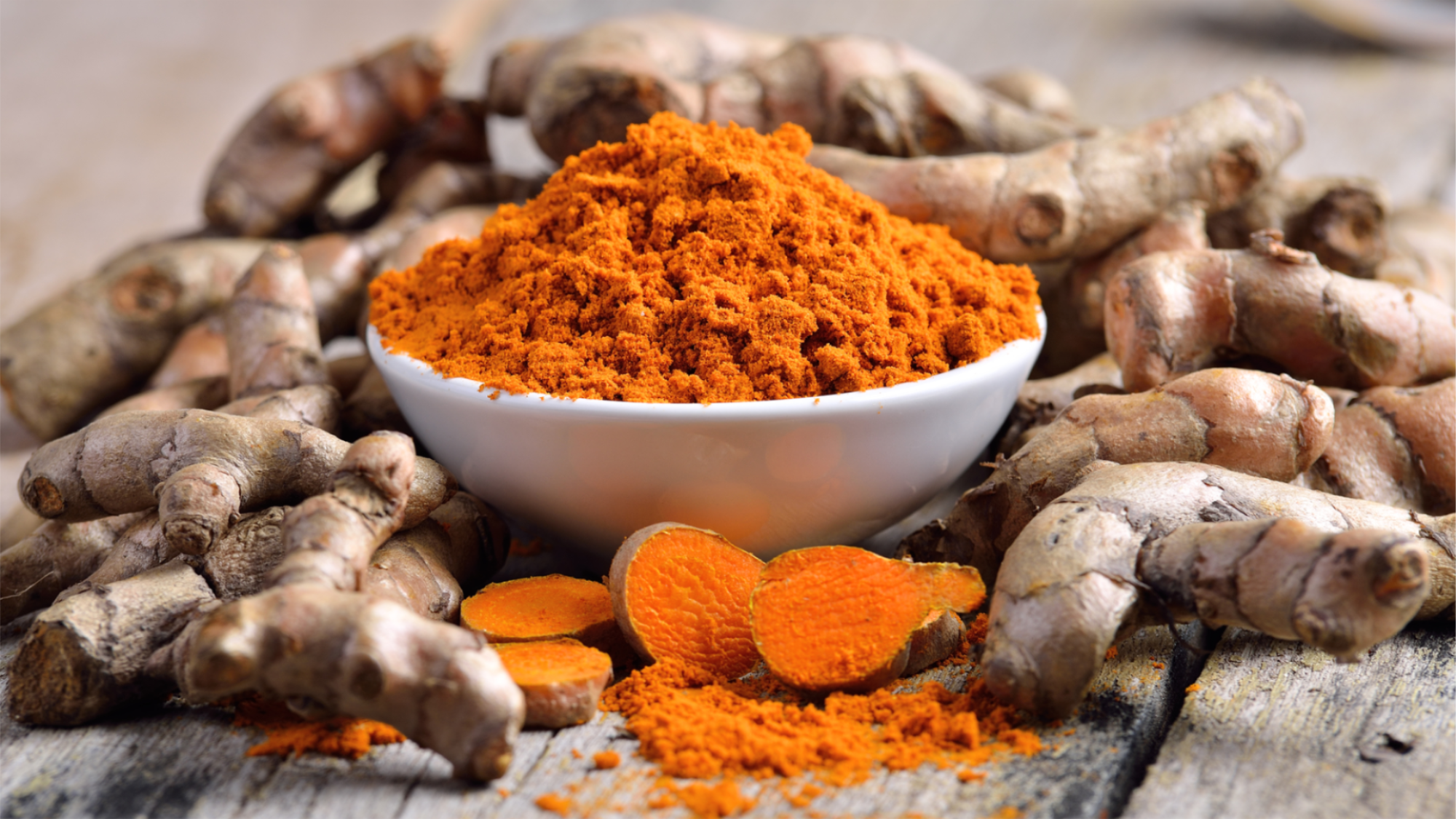As it turns out, turmeric (more specifically its active compound, curcumin) is more than just a delicious seasoning for your favorite Indian takeout dish. This fragrant yellow spice, a close relative of ginger, is also renowned for its anti-inflammatory properties, antioxidant effect, weight management support, and pain relief. Wondering if supplementing with turmeric can help improve your pain in a natural way? Turmeric (curcumin) shows a surprising number of health benefits:
Pain Relief
One of the most compelling benefits of using turmeric is its pain relief properties. One study conducted by the Cytokine Research Laboratory found that the curcumin in turmeric was a more effective anti-inflammatory than aspirin and ibuprofen, and has pain-relief properties on par with phenylbutazone and hydrocortisone. This is fantastic news for people with chronic pain who are concerned about the negative side effects (like liver damage and ulcers) that can arise with long-term or heavy use of NSAIDs.
Antioxidant Properties
Curcumin is also renowned for its antioxidant properties, which can make a big difference in how quickly your body heals! The cells in your body create “free radicals” as part of their normal metabolic cycle. And when inflammation is present in the body, free radical production goes up. Without antioxidants (which neutralize free radicals), these harmful free radicals have the potential to further damage the cells and organs in the body. Adding antioxidants like curcumin to your diet while you recover from an injury can help your body heal.
Using Turmeric for Inflammation
While there isn’t a standardized dose of turmeric, many studies have concluded that, even at high doses, turmeric is safe for consumption. The most common mild side effect that you may notice is gastrointestinal discomfort, which can be avoided if you add turmeric to your diet slowly (instead of a high dose all at once!) In general, it’s a good idea to take the most natural (organic and minimally processed) form of turmeric/curcumin that you can find, to help your body most easily absorb it.
The most common ways to use turmeric/curcumin include the following:
You can make turmeric paste by mixing ¼ cup turmeric powder with ½ cup water, then heating on low until a thick paste is formed. This mixture can be kept in your fridge for several weeks. This paste can be eaten in turmeric milk (recipe below) or applied topically by mixing with coconut oil or olive oil spreading across the affected area. Massage this paste into the skin, wrap with plastic wrap, and leave on for an hour.
Add a piece of raw turmeric root (½ inch to 1 inch) or a teaspoon of turmeric paste to a cup of milk in a saucepan. Heat slowly to simmer, but do not boil. Any kind of milk (almond milk, coconut milk, cow’s milk) will work! For turmeric tea, repeat this same process with water. If you like, add a little bit of butter and maple syrup!
Curcumin can also be taken in concentrated form through capsules. Make sure you consult with a doctor on the right dosage for you before you begin taking curcumin capsules, since this method of taking turmeric is the most potent, and your doctor will have helpful insight into your unique health history.
Curcumin can also be taken as a food-grade essential oil, either topically or by mouth. If you don’t like the taste of turmeric milk, this can be a good way to take turmeric in a concentrated form! Keep in mind that, like other anti-inflammatories, turmeric is a blood thinner and should not be taken during pregnancy or before surgeries and medical procedures. Turmeric can also change how some medications interact with your body (like anti-depressants). When in doubt, ALWAYS talk to your doctor! Keep in mind that while turmeric shows a lot of potential for lowering inflammation and pain, it won’t treat the underlying cause of your pain.

